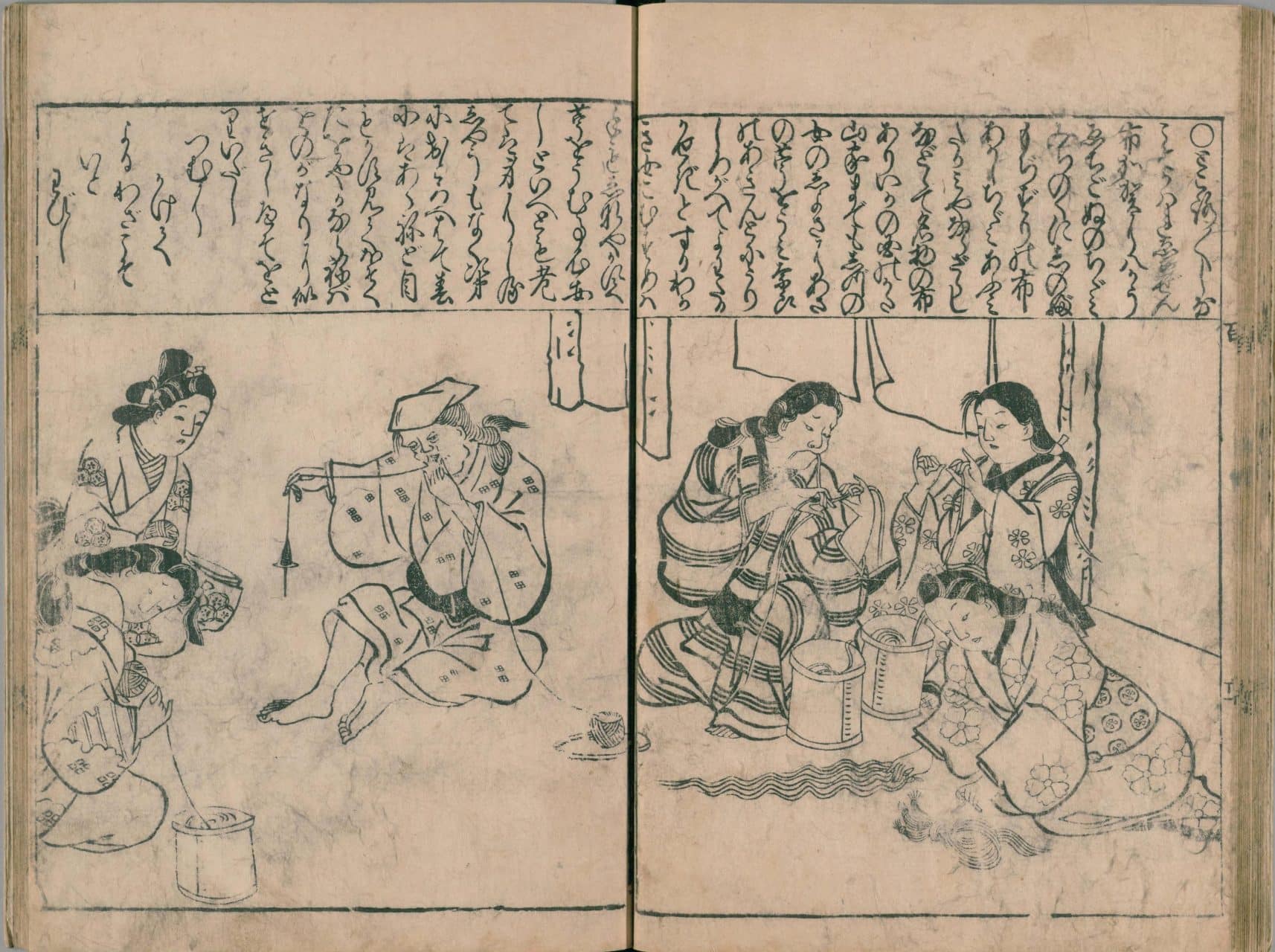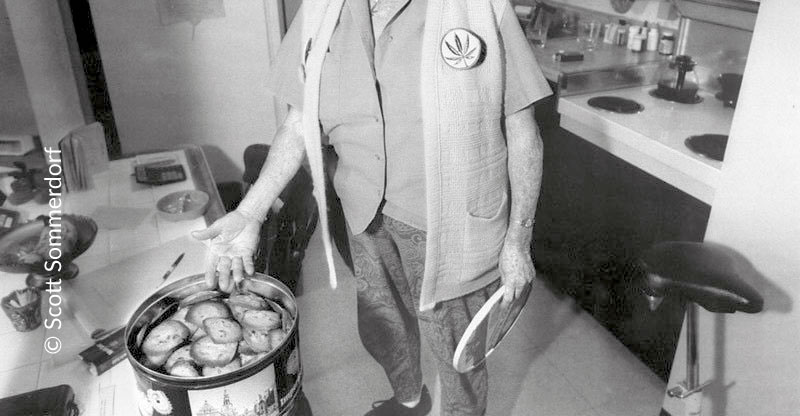
Hishikawa Moronobu, 1695
Wakoku hyakujo
Every aspect of work involving hemp, from planting to weaving, was women’s labour. So, when at the end of the 17th century, Hishikawa Moronobu decided to portray the customs and manners of Japanese women of the time, hemp spinners played an important role. In 1695, a year after the artist’s death, his illustrations were published in the book Wakoku hyakujo (One Hundred Women of Japan).
According to researcher Robert Clarke, Japanese hemp fibre processing follows much the same procedure as in Korea with one major exception; rather than steaming hemp stalks, the Japanese briefly plunge bundles of long stalks into boiling water, spread the stalks to dry in the sun, and at a later time, employ a controlled fermentation retting to loosen the bark.








